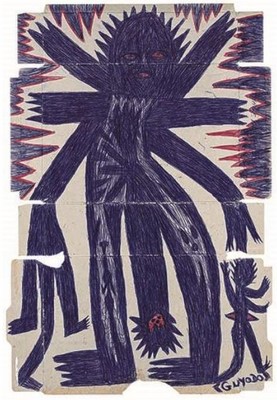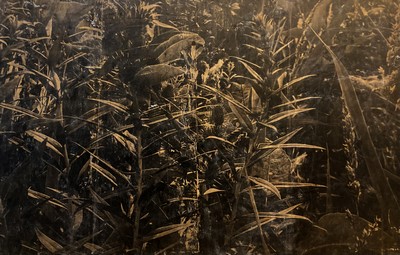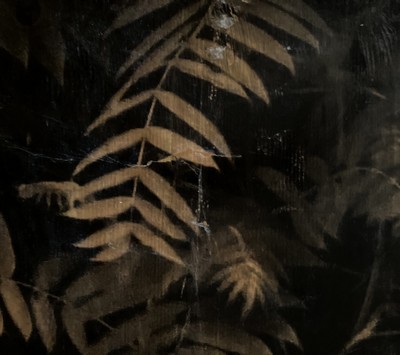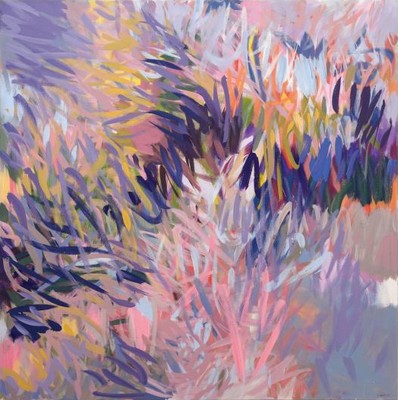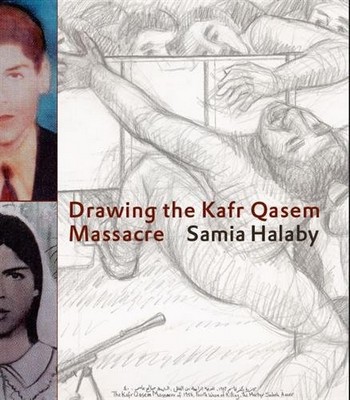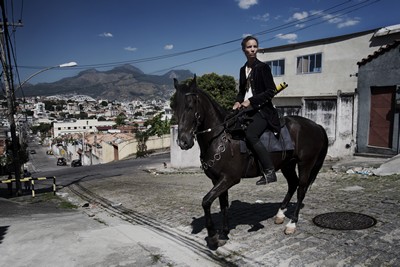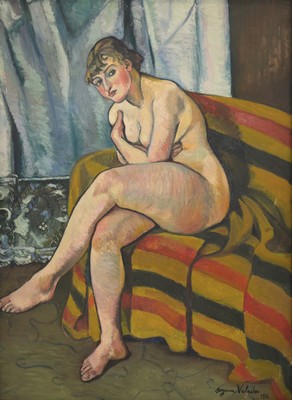5e biennale de l’Art Brut: Croyances
Collection de l'Art Brut, Lausanne
Jusqu'au 1er mai 2022
Sans titre, 2015
Mine de plomb et stylo-bille sur papier, 14,8 x 20,9 cm
Photo : Atelier de numérisation – Ville de Lausanne (AN)
Collection de l’Art Brut, Lausanne
Christ-Roi, 1941
Huile sur toile, 59 x 48 cm
Photo : Atelier de numérisation – Ville de Lausanne (AN)
Collection de l’Art Brut, Lausanne
L’union primordiale, entre 1942 et 1950
Gouache sur papier, 26 x 21 cm
Photo : Atelier de numérisation – Ville de Lausanne (AN)
Collection de l’Art Brut, Lausanne
En se plaçant sous le thème des croyances, la 5e biennale de l’Art Brut révèle une nouvelle facette des fonds du musée lausannois. Près de trois cents dessins, peintures, assemblages, sculptures, écrits et broderies dus à quarante-trois auteurs ont été sélectionnés et constituent une sorte d’éventail des possibles, avec aussi bien des illustrations de divinités et de saints, que des compositions abstraites d’un grand raffinement, des peintures à caractère symboliste et des objets rituels. L’exposition invite à faire dialoguer les univers de ces différents créateurs, bien que leurs mondes demeurent uniques et très exclusifs. Les principaux angles d’approche retenus regroupent des œuvres en lien avec la religion, un ensemble de productions dites spirites, une grande pluralité de travaux issus de mythologies personnelles, ainsi que quelques pièces réalisées par des adeptes des sciences occultes ou de la radiesthésie.
Pierre, 1964
Encre sur papier, 65 x 50 cm
Photo : Atelier de numérisation – Ville de Lausanne (AN)
Collection de l’Art Brut, Lausanne
Sans titre, sans date
Stylo à bille sur carton d’emballage, 59 x 40,5 cm
Photo : Atelier de numérisation – Ville de Lausanne (AN)
Collection de l’Art Brut, Lausanne
Sans titre, entre 1976 et 1982
Assemblage de tissu, racines, papier, fil de fer et
matériaux divers, le tout enduit, haut. : 26,5 cm
Photo : Atelier de numérisation – Ville de Lausanne (AN)
Collection de l’Art Brut, Lausanne
Si nombre d’auteurs d’Art Brut vivent en marge de la société, ils restent néanmoins profondément empreints de religion. Celle-ci tient en effet une place importante dans leur éducation et leur quotidien, et colonise leur imaginaire. Quant aux spirites ou médiums, ils affirment être en relation avec l’au-delà et guidés dans leur pratique artistique par des défunts ou des forces surnaturelles, se soustrayant ainsi à la paternité de leurs travaux. Cependant, c’est bien souvent par modestie ou crainte d’être perçus comme illégitimes que ces autodidactes se retranchent derrière cet alibi. L’exposition présente aussi des créations investies de pouvoirs magiques par leurs auteurs, censées notamment remplir une fonction protectrice ou jouer le rôle de talisman.
Icône Bernadette, 2015
Feutre, correcteur blanc et collage sur papier glacé
42 x 29,9 cm
Photo : Atelier de numérisation – Ville de Lausanne (AN)
Collection de l’Art Brut, Lausanne
Sans titre, sans date
Peinture sur toile, 60 x 35 cm
Photo : Atelier de numérisation – Ville de Lausanne (AN)
Collection de l’Art Brut, Lausanne
Vierges, entre 2006 et 2020
Mine de plomb, encre de Chine et crayon de couleur sur papier
42 x 29,7 cm
Photo : Atelier de numérisation – Ville de Lausanne (AN)
Collection de l’Art Brut, Lausanne
Les auteurs d’Art Brut ne se distinguent pas tant des autres artistes par leurs interrogations métaphysiques, mais bien par les moyens inédits qu’ils inventent et les procédés qu’ils mettent en œuvre pour y répondre et se relier au monde. En quête d’explications sur les fondements de l’être, sur la vie, la mort ou, plus humblement, sur leur propre destin, pour la plupart en rupture de ban avec la société, marginaux ou anticonformistes, ils ne trouvent à priori pas de réponses dans les dogmes et les repères habituels. Ils conçoivent leurs propres croyances, élaborant des théories singulières et construisant des systèmes de pensée originaux. Et, quand ils s’en remettent à des traditions religieuses, ils les réinterprètent en un geste de réappropriation.
Commissariat : Anic Zanzi, conservatrice à la Collection de l’Art Brut
Sans titre, ca 1903
Crayon noir sur papier, 32,5 x 24 cm
Photo : Atelier de numérisation – Ville de Lausanne (AN)
Collection de l’Art Brut, Lausanne
Sans titre, s.d.
Broderie de laine, 125 x 150 cm
Photo : Atelier de numérisation – Ville de Lausanne (AN)
Collection de l’Art Brut, Lausanne
PUBLICATION
Le n° 5 de la série éditoriale « Art Brut, la collection », intitulé Croyances, accompagne l’exposition et apporte différents éclairages sur la thématique des croyances dans l’Art Brut. Deux éditions séparées (français et anglais).
Croyances, Lausanne/ Milan
Collection de l’Art Brut/ 5 Continents Editions, 2021,
« Art Brut, la collection », sous la direction de Sarah Lombardi,
168 pages, plus de 100 illustrations couleur, disponible en français et en anglais
LISTE DES AUTEURS PRÉSENTÉS DANS L’EXPOSITION
ALOÏSE [CORBAZ]
NOVIADI ANGKASAPURA
CHARLES BOUSSION
MARIE BOUTTIER
FLEURY-JOSEPH CRÉPIN
ANTONIO DALLA VALLE
FERNAND DESMOULIN
JANKO DOMSIC
PHILIPPE DUCOLLET-MICHAËLEF
ELIJAH
MINNIE EVANS
JILL GALLIENI
MADGE GILL
JULES GODI
FENGYI GUO
GUYODO
WERNER HERTIG
AUGUSTIN LESAGE
RAPHAËL LONNÉ
SIMONE MARYE
JOSEPH MOINDRE
EDMUND MONSIEL
MARC MORET
MICHEL NEDJAR
ATAA OKO
MICHAEL PANKOKS
LAURE PIGEON
GIOVANNI BATTISTA PODESTÀ
CATHERINE DE PORADA
JANE RUFFIÉ
F. SEDLAK
VICTOR SIMON
PALMERINO SORGENTE
NI NYOMAN TANJUNG
THEO
JOHANN THOMA
JEANNE TRIPIER
LE COMTE DE TROMELIN
VICTOR-FRANÇOIS
AUGUST WALLA
ADOLF WÖLFLI
MARIA WNEK
HENRIETTE ZÉPHIR
COLLECTION DE L'ART BRUT
Avenue des Bergières 11, 1004 Lausanne





